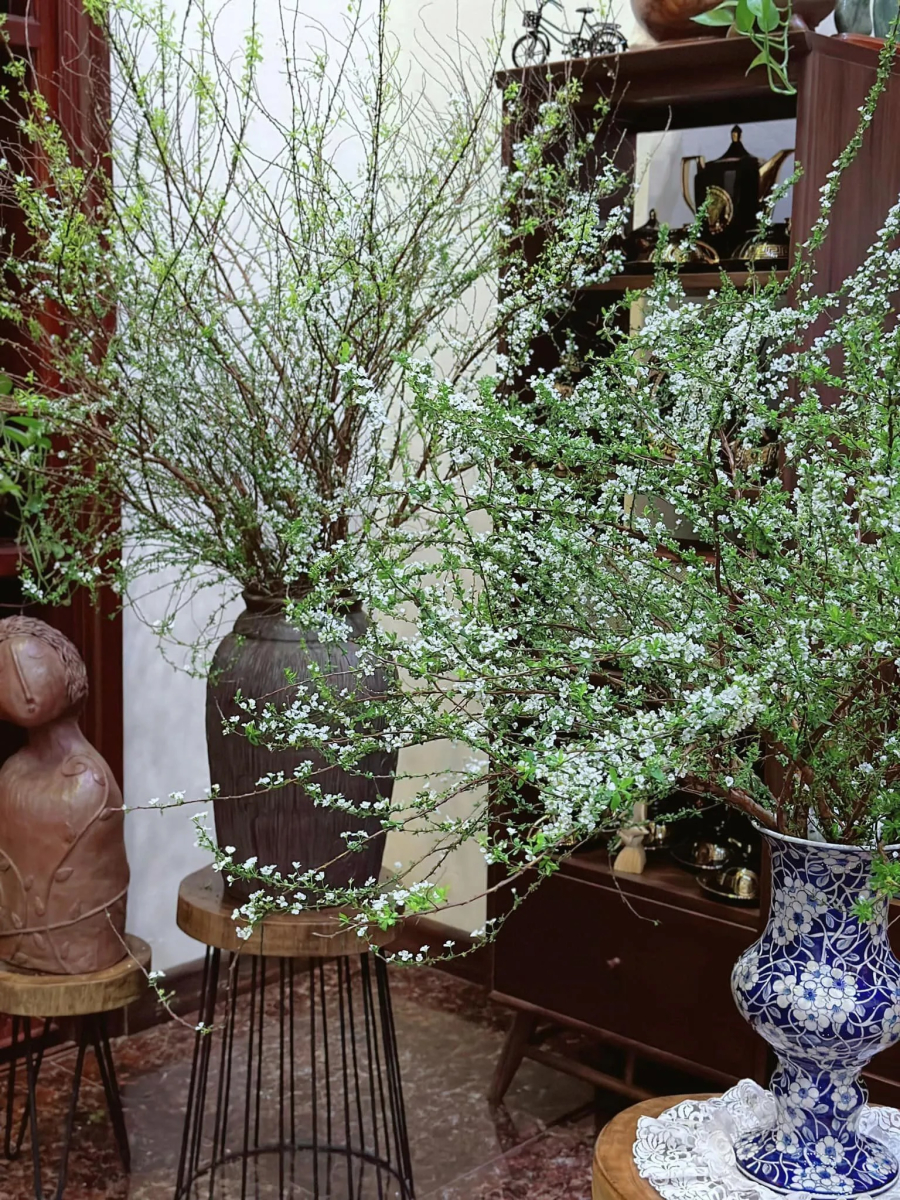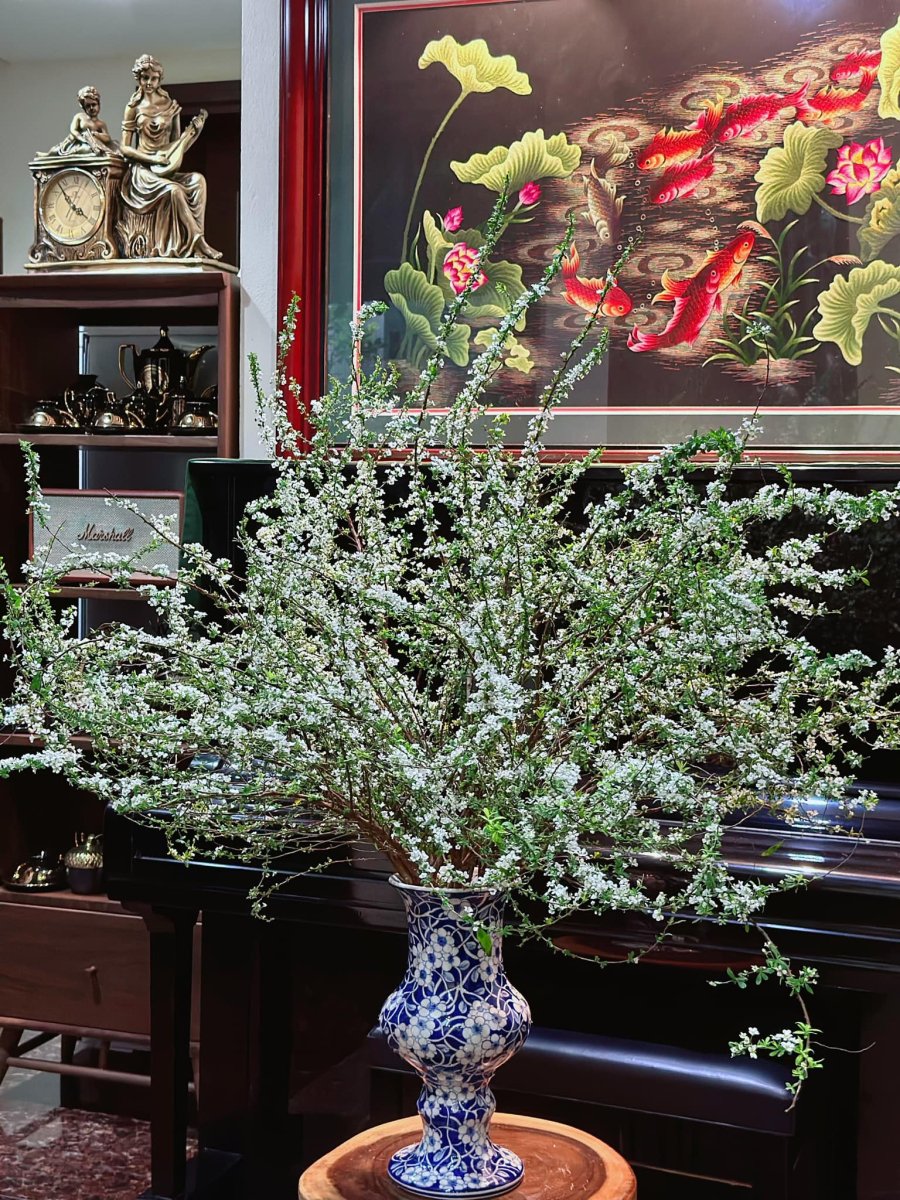Snowball Garden
Characteristics: Compared to forest snowball, snowball grown in the garden has features such as shorter branches, larger flowers, and denser blooming. They bloom early, carrying more leaves and buds. The leaves of the snowball garden are round in shape, dark green in color, unlike the young green of the forest snowball. When buying, typically, the snowball garden branches have green leaves and flowers, while the tree trunk has a light brown color mixed with a green hue, different from the dark brown color of the forest snowball.

Durability: Snowball garden stays fresh for up to 2 weeks, which is less than a week less than the forest snowball. In order for the flowers to be most beautiful from day 7 to day 12, it is advisable to buy flowers around the 23rd to 25th day of the lunar month to ensure that the flowers bloom right on the three days of the Lunar New Year without wilting.
How to choose snowball garden: When choosing to buy, look for a bouquet of flowers with dark and full leaves, soft flowering branches without shedding leaves to ensure beautiful blooming. The more flower buds, the denser the flowers become when blooming. With good care, the flowers will bloom pure white, dense from the roots to the top, creating a beautiful image like snowflakes.

Forest Snowball
Currently, there are two types of forest snowball being sold, one with red leaves and one without leaves. The forest snowball with red leaves has a graceful and distinctive appearance even when not in bloom.
Characteristics: Forest snowball has curved and long branches, superior to garden snowball. When in bloom, flowers appear close together, followed by young fruit and new leaves. The red leaf version when purchased already has ready-to-bloom flowers, long and red leaves on the top branches that are very attractive. Meanwhile, the one without leaves initially looks like a dry firewood bundle, but it still produces worthy results when taken care of diligently.
Durability: Forest snowball takes longer to bloom compared to garden snowball, about 7 to 12 days after bringing it home. They last from 3 to 4 weeks. In order for the flowers to bloom without wilting on the three days of the Lunar New Year, it is advisable to buy around the 20th to 23rd day of the lunar month.

Blossom selection: When choosing forest snowball, prioritize mature branches with dark brown trunks; the more curved the branch, the more elegant it will be when arranged. Choose branches with full flower buds, because the more buds there are, the more vibrant the flowers become when blooming.
Care instructions: In cold and dry weather conditions, cut the base part of the branch about 7-10cm and put it in warm water. At the same time, mist the branch twice a day for a total of 7 days until the flowers bloom.
This year, the price of snowball is much lower than in previous years, and most of them have many flower buds. With proper care, anyone who loves to display snowball flowers can own a sparkling vase of flowers for the upcoming traditional Tet holiday.



































